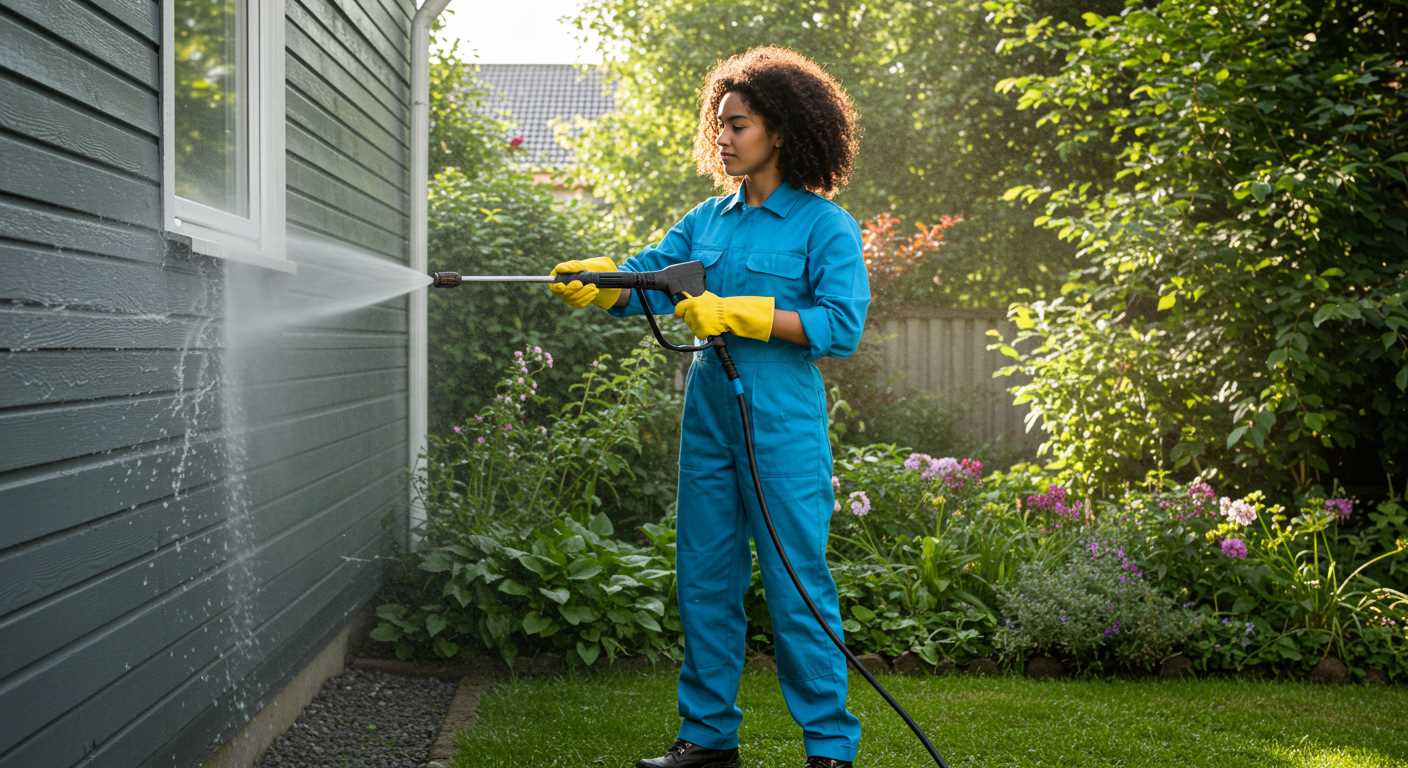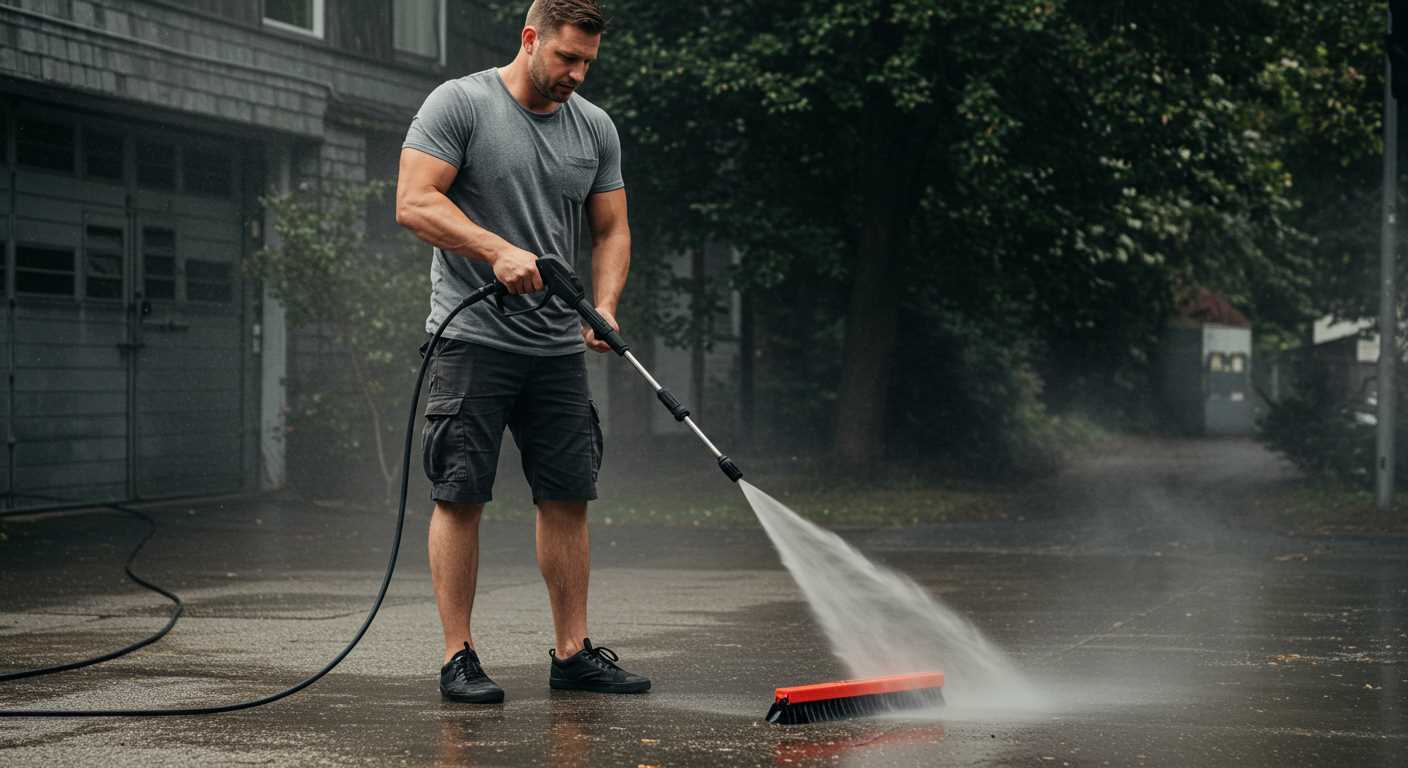



Utilising a high-pressure sprayer on photovoltaic systems is not advisable. The intense force can cause damage to delicate components, leading to costly repairs or replacement.
For optimal maintenance, consider alternative cleaning methods that ensure safety and efficiency. A soft brush with a gentle cleaning solution, typically made from biodegradable materials, can effectively remove dirt and grime without risking harm.
Regular inspections alongside comprehensive cleaning routines are paramount. Establish a schedule to check for debris accumulation, especially after severe weather. Maintaining clean surfaces can significantly enhance energy production.
In instances of stubborn stains, leveraging warm water and mild detergents while avoiding abrasive tools is recommended. This approach preserves the integrity of the system while ensuring thorough cleaning.
By prioritising these methods, you will protect your investment and ensure that the performance of these renewable energy sources remains at its peak for years to come.
Understanding the Risks of Using a Pressure Washer on Solar Panels
Using a high-powered cleaning device can potentially damage photovoltaic systems. The intense force of the water stream may exceed the durability of the glass surface, leading to cracks or other forms of structural stress. This is particularly true if the angle of the spray is not carefully managed.
Many people overlook the risk of harming the delicate seals and wiring components when subjected to strong jets of water. These elements are crucial for maintaining the performance and longevity of the energy-generating units. Compromised seals can lead to moisture infiltration, while damaged wiring can disrupt the entire operation.
Potential Consequences of Improper Use
.jpg)
Applying excessive pressure or incorrect techniques can result in reduced efficiency. An unforeseen accumulation of dirt and debris may develop if not properly handled, causing long-term performance issues. Additionally, warranties may become void if damage is traced back to improper maintenance methods.
It is advisable to explore gentler cleaning techniques, such as soft cloths, squeegees, or specialised non-abrasive cleaning solutions. These methods reduce the risk of harming the surfaces while ensuring that dirt and grime are effectively removed. Always consult the manufacturer’s guidelines before undertaking any cleaning regime.
Alternative Cleaning Methods
Incorporating equipment designed specifically for solar panel maintenance promises a safer approach. Water-fed pole systems or gentle wash solutions allow for thorough cleaning without the associated risks of powerful water jets. Regular inspections are also beneficial to monitor for any signs of damage or performance decline, ensuring the system operates effectively throughout its lifetime.
Ultimately, precaution and informed choices lead to safe and effective maintenance of photovoltaic systems, protecting both the investment and the environment. Prioritising the well-being of the energy-generating installations ensures their optimal performance and longevity.
Recommended Pressure Settings for Safe Cleaning

To clean photovoltaic surfaces effectively while minimizing the risk of damage, it’s advisable to maintain a pressure range of 1,200 to 1,500 psi. This level is sufficient to remove dirt and debris without harming delicate structures.
Utilising a fan spray nozzle, preferably with a 25-degree or 40-degree angle, allows for even distribution of water, reducing the likelihood of creating any concentrated impact that could lead to cracks or surface imperfections.
It’s essential to keep the nozzle at least 18 inches away from the surface during the operation. This distance helps to ensure that the water pressure is diffused adequately before it reaches the modules.
| Pressure Setting (psi) | Nozzle Type | Distance from Surface |
|---|---|---|
| 1200 – 1500 | 25-degree or 40-degree | 18 inches |
Regular maintenance of the equipment and checking the nozzle condition will further ensure optimal performance. Avoid using any attachments that might increase pressure or create a more concentrated spray, as they can cause irreversible damage to the photovoltaic systems.
Alternative Tools for Cleaning Solar Arrays

For optimal maintenance, consider using a soft brush on a long handle. This tool allows for gentle scrubbing without the risk of damage. Choose a model with soft bristles to avoid scratching the surface.
Using a squeegee can efficiently remove water and debris. Opt for one with a rubber blade to ensure a streak-free finish. This method works best after using water or a mild soap solution for pre-cleaning.
Employing a garden hose with a spray nozzle offers a gentle rinse option. Select a nozzle that provides a flat spray pattern to cover more area without exerting excessive force.
In addition, a microfiber cloth or sponge can assist in spot cleaning tough stains. This gentle material is effective for delicate surfaces, ensuring no scratches occur during application.
Consider utilising a water-fed pole system. These systems provide pure water through a telescoping pole, eliminating the need for ladders and reducing the risk of damage to the equipment.
For stubborn grime, a biodegradable cleaning solution can enhance cleaning efforts. Ensure it’s safe for use on sensitive materials and easy to rinse away.
Opting for these tools and methods can ensure efficient upkeep while prolonging the lifespan of your energy-generating units. Always prioritise safety and care during the process to maintain optimal performance.
How to Inspect Solar Panels After Cleaning
Examine the surface carefully for any signs of damage, such as cracks or scratches. Use a dry cloth to wipe excess water and inspect for dirt or debris that may remain. Look for visible streaks which might indicate improper cleaning tools or techniques. Ensure that all corners and edges are clear of contaminants.
Check Electrical Components
After cleaning, inspect wiring and junction boxes for moisture accumulation or loose connections. Any signs of corrosion should prompt immediate attention, as these can impact overall functionality. Perform a visual assessment of inverter displays; they should show normal operational readings.
Monitor Performance
Post-cleaning, keep track of energy output for a few days. Any significant deviations from expected performance may signal an underlying issue. Document these readings and compare them to previous data; this can help identify trends. If problems persist, consult a professional for further analysis.
Frequency of Cleaning Solar Installations Effectively
Regular maintenance significantly enhances the performance of your energy-generating systems. Cleaning should be performed at least twice a year, ideally in spring and autumn, to optimise energy output.
Environmental factors dictate cleaning frequency:
- Location: Areas with high dust levels, such as deserts or industrial zones, may necessitate monthly cleanings.
- Weather Conditions: Rain can help remove dirt; however, prolonged dry spells may require more frequent attention.
- Surroundings: Nearby trees that shed leaves or pollen can lead to increased buildup, warranting extra cleanings during peak seasons.
Monitoring energy output through a monitoring system can provide insights. A notable decrease in performance can indicate the need for immediate cleaning.
Adopting a proactive approach ensures that any debris accumulation doesn’t impact efficiency significantly. Always evaluate specific conditions and adjust the cleaning schedule accordingly to maintain optimal function.
Environmental Considerations When Cleaning Solar Panels
Opt for environmentally friendly cleaning solutions to preserve local ecosystems while maintaining the efficiency of your energy collection systems. Harsh chemicals can leach into groundwater and harm surrounding flora and fauna.
Here are key practices to follow:
- Choose biodegradable or non-toxic cleaning agents to minimise chemical runoff.
- Utilise only as much water as necessary. Water conservation is crucial, especially in drought-prone areas.
- Collect runoff water for potential reuse, ensuring it does not contaminate the environment.
- Be mindful of nearby plants and vegetation, avoiding spray that could damage or kill local species.
- Plan cleaning activities around local wildlife patterns to avoid disturbing habitats.
Implementing these strategies not only maintains the efficiency of your energy collection devices but also supports environmental sustainability. Collaborate with local regulations regarding wastewater disposal to ensure compliance and protection of natural resources.
Professional Cleaning Services: When to Consider Them
Engaging a cleaning service is advisable if extensive maintenance is required, especially for larger installations. These teams have access to specialised equipment and expertise, ensuring a thorough and safe approach while preserving the integrity of your energy-collecting units.
Benefits of Hiring Experts
Professionals are equipped to manage hard-to-reach spots and can address stubborn dirt or debris buildup. They understand how to avoid damaging elements during the cleaning process and often carry appropriate insurance in case of accidental damage. This level of assurance can significantly reduce your concerns about potential mishaps.
Signs You Need Professional Help
If visibility issues arise due to grime and hinder optimal energy absorption, or if you notice inconsistent performance despite regular cleaning attempts, it may be time to seek professional services. Additionally, persistent streaks or marks after a DIY clean can signal the need for an expert touch.
Lastly, for those lacking the time or physical ability to manage robust cleaning tasks, hiring a professional is a practical solution. This allows you to focus on other priorities while ensuring your energy systems remain effective and efficient.








